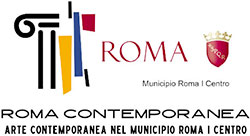First Italian solo exhibition of Norwegian artist Kenneth Blom, who under the title "Escape" presents a series of works made especially for this occasion. The exhibition is curated by Luisa Catucci and Massimo Scaringella.
His pictorial works exude a subtle psychological tension and evoke a latent film noir atmosphere. In his compositional approach, Blom deftly adopts the role of director, using background scenographies as an expressive stage to reveal the human drama inherent in his visual stories. In his canvases, a skillful fusion of geometric elements, coupled with the masterful use of diagonal lines and vanishing points, evokes a strong architectural atmosphere reminiscent of the pioneering works of Mies Van Der Rohe, Alvar Aalto, Le Corbusier and Walter Gropius at the dawn of modern architecture. At the same time, the artist's artistic intent goes beyond the mere depiction of specific environments; instead, he aims to arouse deep feelings and emotions in the viewer, thus establishing the perfect backdrop for the enactments of his subjects/actors.
The enigmatic figures that populate his paintings seem guided by a deep sensitivity, even in moments of stillness. The juxtaposition of abstract and figurative painting, in which wild and untamed brushstrokes harmonize with controlled backgrounds, gives each work an air of mystery, unease and narrative depth, where the characters depicted, acquire an archetypal status personifiing the human psychological condition and existential obsessions. Drawing on the insights of C.G. Jung, the collective character of archetypes manifests itself through fortuitous coincidences that amalgamate with profound significations, suggesting that the archetype - or collective unconscious - permeates not only the psyche of the individual, but also the external environment. It is this archetypal world that pervades the psychic realm and is considered "eternal" and beyond the constraints of time that captures the viewer confronted with Kenneth Blom's works.
His pictorial narratives riflect an atmosphere of predominant melancholy and loneliness, emphasized by the choice of color and the subjects/actors, who appear usually alone or in pairs, in indefinite geographical landscapes and unrecognizable regional architecture, and of whom elude precise definition of either ethnic or social or cultural origins. This portrayal serves to accentuate the mental state and inherent sense of loneliness resulting from a dystopian perception of contemporary society, which likewise arouses in the viewer a variation of universally recognizable emotions. The transcendent qualities of his art excludes the transmissions of specific messages, instead addressing directly the essence of human nature. Blom's visual language, distinct in its radicality, is developed through a melange of flat, sinuous forms with expressive deformations of the human body, accurate color schemes and judicious use of architectural symbolism, yet proposing a certain temporality, more cyclical than chronological, for our existence. In this way, his world and the universe merge, in this manner, a kind of communion is established between man and the cosmos.




